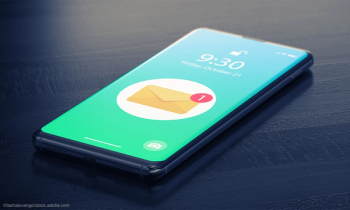
A Physician’s Experience Using the Dell Latitude 10
A tech-savvy doctor and iPad mini user surveys the landscape of a new Windows 8 tablet for his daily practice.
As a family physician who practices both inpatient and outpatient medicine while managing a family medicine residency program, I have grown accustomed to using Apple’s iPad (and now iPad mini) over the last three years while working and with good reason.
These devices place a priority on speed of interface, quick access to essential features, and a wide variety of medical apps while integrating reasonably well into most existing hospital networks and providing outstanding battery life.
The Dell Latitude 10, a new competitor to the dominant Apple iPad, is an interesting device, staking its chances on success with some innovative features, boosted security, and excellent battery life.
Overall, it represents a reasonable, but not altogether practical, approach to accessing both EHR systems and other important services for today’s physician. Let’s take a closer look.
The Specs
The Latitude 10 comes packing an Intel Atom processor running at 1.8 Ghz with 2 GB of RAM. Running 32-bit Windows 8 Pro is no problem for this tablet and I never noticed any lag within the interface or launching applications. For those of you who haven’t used it yet, Windows 8 is Microsoft’s new interface for accessing everything on your computing device and it’s great as long as you stay within the main interface.
Jumping to the desktop gives you the same Windows interface you’ve probably used for years (albeit it with no “Start” button, although this will be one of the things rectified in the upcoming Windows 8.1 software update). Surprisingly, Dell kept the amount of third-party programs pre-installed to a minimum (probably to maximize a user’s ability to load the 64 GB of speedy solid-state memory with applications they want). The 10.1-inch screen has a resolution of 1366 x 768 pixels and looks reasonably good indoors (less so when moving outside or into natural sunlight). The form factor and build are very good. The widescreen is quite distinctive and the rubber-like back provides a good feel when holding the Latitude in your hands.
The edition of the tablet Dell sent me includes a biometric fingerprint scanner (more on that below) as well as both software and physical enhancements for additional security precautions that make this device appealing to IT managers in healthcare systems. Dell was kind enough to send the docking station, as well as stylus, keyboard, and wireless mouse to try with the tablet as well. Adding the docking station and the keyboard/mouse combo definitely gives the device a "desktop lite" feel due to the extra ports on the docking station. All of this comes at a hefty price though, with the device itself costing around $779 alone or $1,029 with the above editions.
Does it Measure up?
When comparing the Dell to my iOS devices there were some key similarities. The feel of the device is sleek and fashionable, with the rubber-like back material providing a good grip when holding the device. The weight is comparable to an iPad, albeit it in a somewhat thicker form. Screen resolution is impressive and superior to the iPad mini, but can’t compare to the retina display on the newest, full-size iPads. One advantage the iPad mini holds over both the Dell and a full-sized iPad is that it fits in a medical coat’s standard pockets - for physicians moving from room to room or through the hospital or practice, this may be an incredibly important characteristic.
By far, the best feature of the Latitude 10 was the battery life. Dell’s standard battery did pretty well (about six hours to seven hours from full charge and running numerous applications while browsing the Web and checking e-mail regularly). Adding the extended battery added a little weight, but propelled battery life into the 12-hour to 14-hour range, which is more than enough to get through a typical physician’s workday.
The interface is responsive, although I found touch sensitivity between the devices to be slightly better on the iPads. Adding the stylus to the Dell improved responsiveness, but decreased typing speeds as well.
The screen size of the Dell device is nice, but it felt smaller than it was due to the one-inch border surrounding it on all sides. Furthermore, the dimensions beg for this device to be used in landscape mode, as opposed to portrait mode.
All the additional security features sound great on paper, but their actual use was a little underwhelming. The biometric scanner, in particular, took multiple attempts to scan my fingerprint and couldn’t reliably sign me into the device. Once you get to the Windows 8 interface, access to apps and other areas is quick, but attempting anything that isn’t Windows 8-based (and right now, that’s a lot) drops you into the familiar, if somewhat dated, Windows desktop. Depending on your perspective, this can be a good (comfortably familiar) or bad (frustratingly unintuitive) situation.
In day-to-day work, a tablet’s usefulness is measured by availability of the applications you need and here, Windows 8’s relative newness becomes a clear issue. Common medical apps like Epocrates are unavailable for download (although you can access the Web-based version) and most everything in the "Health and Fitness" category is geared towards laypeople or medical students. This is a problem that should resolve over time, but if you’re switching from Android- or iOS-based devices, you’ll be frustrated to find many of your favorite medical apps unavailable yet. I never got a chance to test our hospital’s EHR as this required the installation of Java and the Dell wouldn’t accept my information to do the installation (maybe the device is too secure).
Good for Physicians?
The bottom line is that the Dell Latitude 10 is a great piece of hardware somewhat hampered by anemic medical software support and unusual proportions. I could see this being used in an office setting by a physician, but taking it from room to room or through the hospital might be cumbersome. Couple this with security measures that don’t work as advertised always and a pretty high entry cost, I’d say this is a purchase for those physicians who don’t want an iPad or need Windows-specific programs. This may be the best Windows tablet on the market in terms of form and finish, but it still falls short of the ideal device for the average physician.
Saroj Misra, DO, FACOFP, is a board-certified osteopathic family physician who has served as program director of the family medicine residency at St. John Health System since 2004 and as director of medical education since 2013. He also currently serves as vice-chair of the Department of Family Medicine at St. John Macomb-Oakland Hospital. Misra has an abiding interest in medical technologies, especially those related to how physicians interact with EHRs and patients. He is married and has two young daughters who keep him humble and busy. E-mail him
Newsletter
Optimize your practice with the Physicians Practice newsletter, offering management pearls, leadership tips, and business strategies tailored for practice administrators and physicians of any specialty.








